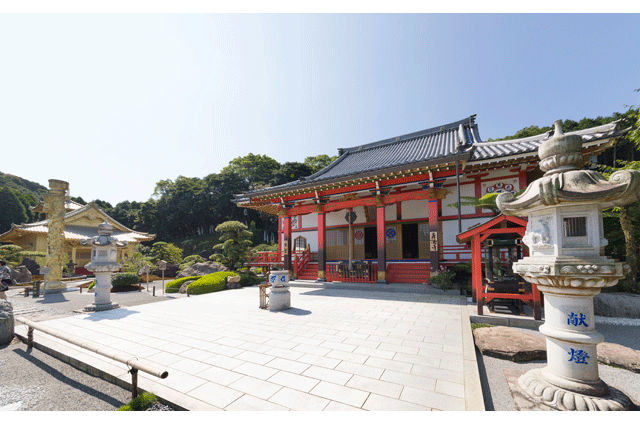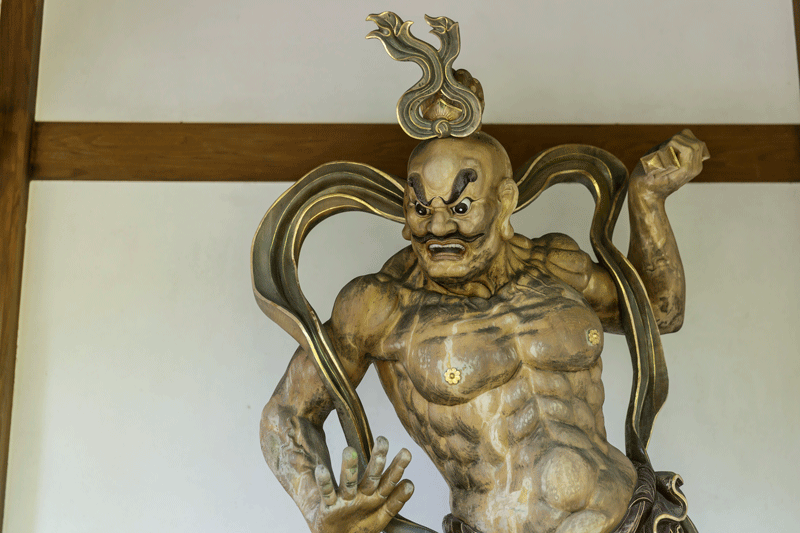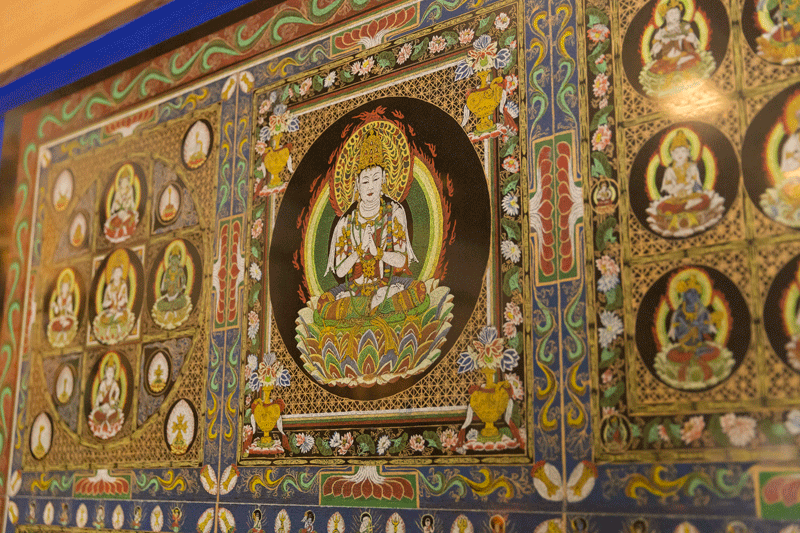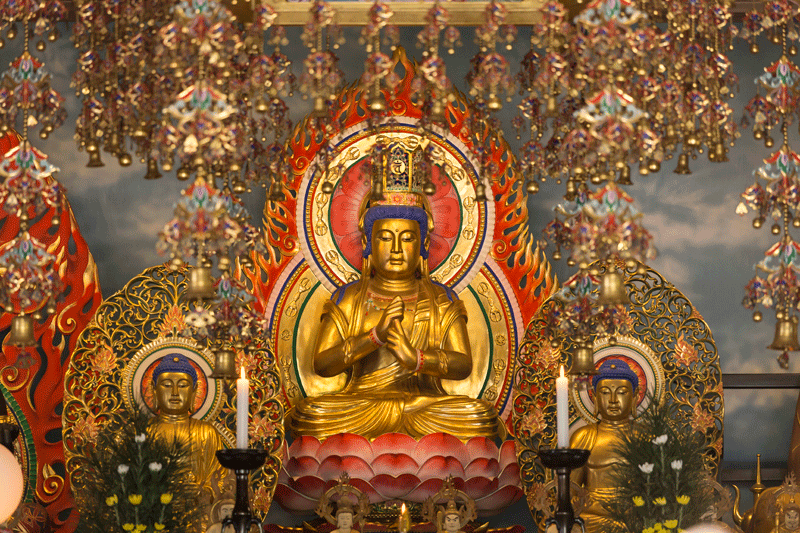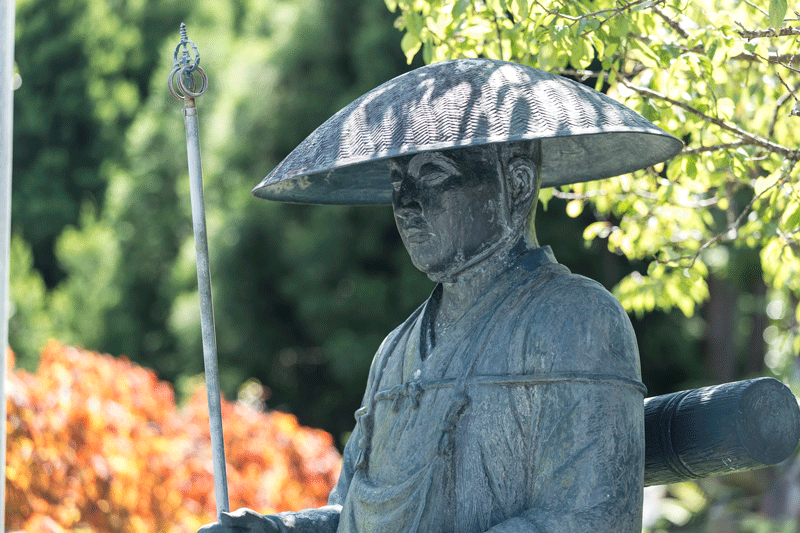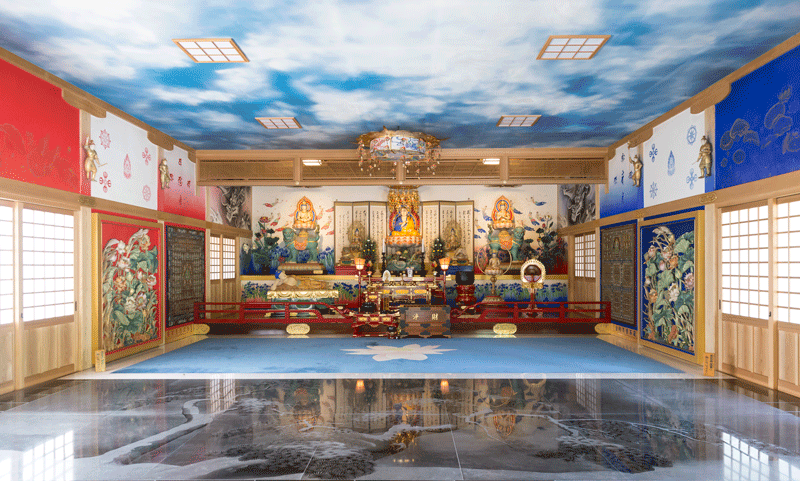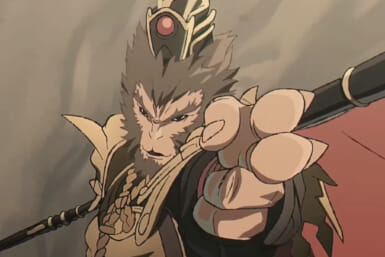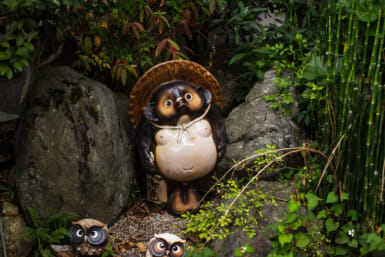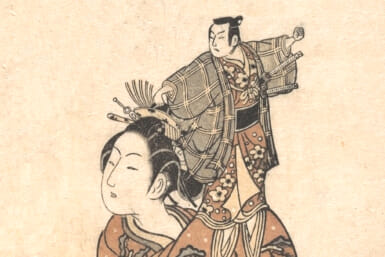With artistry around every corner, this Shingon Buddhist temple is a delight for the senses and the soul.
Atop one of the wild, untamed mountains of southern Kagoshima Prefecture is Fudosan Seiryuji. The Shingon Buddhist temple is spread across a grove surrounded by tall cedar trees, a treasure waiting to be discovered. Across the sprawling grounds stand five buildings, each housing art and religious objects created just for this temple, both onsite and abroad.
Fudosan Seiryuji is remarkably new. In a country that recognizes shrines and temples that are hundreds, even thousands, of years old, visiting a temple that was erected just 25 years ago is a rare experience. Every section of the property has been meticulously planned, down to the last pebble. The sheer number of details is overwhelming, and each one beckons the visitor to appreciate the thought behind it.
From the very beginning – even in the parking lot – aesthetic touches abound. Two broad walls greet you at the gate: on the left is painted a red phoenix; on the right, a blue dragon. A gold statue salutes visitors as they make their way up a path paved with smooth white stones. Upon entering the darkness of the forest, your eyes adjust just in time to see small, quiet Buddhist statues lining the path, crouched behind trees, and beneath the brush.
Walking up the slope, a gateway arch (Niohmon) comes into view – a grand one, replicating traditional arches of the past. Two statues of gods stand poised at the gates, guarding the entrance. In the distance, the arch perfectly frames a tall, standing ivory-white statue of Buddha, the sun glowing across its back.
Once under the arch, the gardens come into full view: smooth sand and pebble gardens, with messages formed by white stones; small statues and pagodas; lush, yet finely trimmed bushes; and tall stalks of grass. Stepping stones lead visitors through shrubbery and past small bonsai and Japanese maple trees, and small ponds filled with glittering blue marbles shine in the sunlight. It’s quiet and tranquil: an ideal place for meditation and contemplation.
To the right, in one of the more humble structures on the premises, is the office and visitors’ center. In the back room, brightly lit with the morning light and a view of the forest below, sit the monks and nuns who help maintain and run the grounds. Their robes are starched and clean, with sharp creases and bright colors. The most striking feature of the monks and nuns are their youth: Fudosan Seiryuji first started construction, and held its first prayer, in July of Heisei Year 2 (1990). The monks and nuns have grown with the temple, making the decisions for a modern way of following Buddhism.
The head monk is Yoshii Yukai. His family founded the temple and began construction once they found the perfect location. “The land in Kagoshima is fertile, and sacred – we are closest to the Eastern Asian roots of Buddhism by being here.” Yukai is relaxed, leaning back in his chair, elbows on the armrest. His eyes are serious as he listens to visitors, and he bows his head frequently in agreement. Yet, his eyes also reveal a youthful glow, a happiness and mischievousness that seems in odds with his position of authority. He steals a glance at the July edition of Weekender, and launches into a monologue about which UFC fighters he is rooting for, comparing their strengths and weaknesses: “This one has the look of a fighter … he is not very traditional in demeanor, but I think he may surprise you.” Another monk contests his claim, and he chuckles at the other’s prediction. “You’ll see, you’ll see, he’ll pull through.”
Yukai then leans back and recalls when the monks and nuns of Seiryuji were doing their research during the temple’s construction period. They took many spiritual journeys and volunteered much of their time at different sites around the world. “On the back wall are photos we took from our trips, and the spiritual locations we visited,” he says, pointing to the collage. It’s a wide array of photos that depict a small but genuinely happy group trekking the world, discovering spiritual and sacred corners of the world that would enhance their understanding of life and Dharma.
“We stayed in Las Vegas a few years ago. It was a wonderful, bright, loud city. I loved Caesar’s Palace. We stopped by on the way to the Grand Canyon, and I would love to go back sometime.” He mulls over the thought, almost amused by the notion. He is quick to speak, and engaging in his movements. He twiddles his thumbs and rocks his feet and rocks back and forth excitedly as he talks about where else the group has traveled. He eagerly recounts trips around Southeast Asia, Europe, and North America.
“We would like to plan more collaboration with other spiritual groups. Nice people are everywhere. Spiritualism can be found everywhere.” The group regularly does international religious exchanges, and raises support for the temple by attending yoga retreats across the world and going on sacred pilgrimages. Yukai speaks softly but enthusiastically at what they’ve seen and learned. “I bring inspiration back here with me. Our place is not traditional; we are carrying tradition into the modern world.”
In the main building (Hondo), which is only fifteen years old, you must take off your shoes. There is a bridge that connects it to two other large halls (the Kannondo and Taishido.) Many of the Buddha statues found in the hall were hand-crafted in Kyoto. One of the nuns points out the black granite floor: “The etchings were done by hand with a small pick for days on end—pick, pick, pick,” she says, while motioning to the floor.
The wood and paint still smell fresh, and religious symbols – the lotus being the most dominant – can be found in every corner. Each section of the hall “houses” a different theme. The main is the most elaborate, with the most grand offerings and statues of Buddha inside. The ceiling is high, and the incense rises steadily. The second and third rooms, are more subdued: one depicts a sky and a being painted in red, the other with a water theme, featuring more rich blues. In Buddhism, “red symbolizes life and passion.” The blue is a representation of “faith, and healing – for water and the heavens all together.” In the back of the garden is a temple painted in gold, for special ceremonies. A dark, wooden structure holds statues of oni (demons), and is a place to write a prayer or expel any bad luck.
Yukai is waiting for us at the end. “Did you meditate?” “Well, we walked in and admired the works.” He chuckles, pleased. “That’s good enough.”
The maze of passages and art can transfix visitors, and the sounds of nature and the trickle of small waterfalls relax and soothe the wandering mind. Smiling faces and encouragement from the caretakers brings a sense of peace to the temple grounds. It may be new sacred land, but it is something special nonetheless.
www.seiryuji.org/index_eng.html
Sponsored Post
Updated On July 19, 2017

